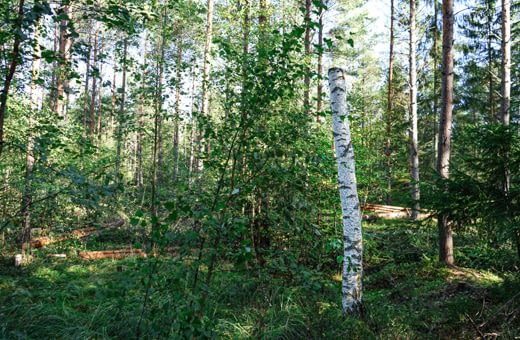The Sustainable Finance platform, under the auspices of the commission, today published its report containing technical criteria for promoting biodiversity in forestry. The EU’s proposed biodiversity criteria under Sustainable Finance do not take into account forest diversity and national characteristics.They also threaten to significantly reduce the profitability of forestry and long-term carbon sinks.
BusinessEurope and CEPF, representing European private forest owners, expressed disagreement with the proposal, which includes an alternative and practical approach to forestry. The group’s proposal will now be examined by the commission. The commission shall decide on the preparation of the final delegated regulation.
The classification system of sustainable financing, or taxonomy, classifies economic activities according to six different environmental criteria. Biodiversity is one of the six areas of sustainability in the legislation.
A technical working group under the auspices of the commission has been preparing a draft biodiversity criteria for forestry for almost two years. Last autumn’s draft, which was the subject of a consultation, received a great deal of criticism from the forestry sector and also from scientists, as a result of which the commission asked five eminent international scientists to assist it in its work.
The commission has set three conditions for the criteria to be highlighted: science-based, sector-available and political acceptance.
– Unfortunately, the forest biodiversity criteria prepared by the working group do not meet these conditions. Although science has been used as the background for the performance, it also extracts partial truths and avoids a wider scientific perspective. It seems that the message of the international top researchers invited by the commission was not taken into account at various stages of the process, which leaves a very strange picture of the whole of the preparatory work, says Karoliina Niemi, Forest Director of the Finnish Forest Industries Federation.
The final draft of the working group did not improve much on the draft that was the subject of the consultation last year and which has received a great deal of criticism, although there has been some national room for manoeuvre.
Examples of unreasonable criteria include the requirement to exclude 20% of the forest owner’s forests from commercial use and the existence of a 30 + 30-metre buffer zone around watercourses. Retention trees should be left for 30 hectares, or 10% of the volume of standing timber, whichever is higher. The size of clear felling would be limited to three hectares in coniferous forests and one hectare in deciduous forests. In addition, an untreated area of 100 m should be left between felling operations, which should not be treated for 40 years. The activity should be accompanied by the production of 30 cubic metres per hectare of deciduous and mixed forests and 20 cubic metres per hectare of coniferous forests. 90% of the soil in the logging area should be left untouched.
– The commission should now bear in mind the broad scientific base, the acceptability and applicability in the sector and the political support. The commission will not achieve its taxonomy objectives by continuing with the working group’s line. This proposal would cause significant financial losses to forest owners involved in taxonomy. At the same time, long-term carbon sinks would fade, which would be inconsistent with the climate criteria, Niemi stresses.
If the commission decides to draw up the delegated legislation itself, it must be adopted both by the Member States and by the European Parliament. Finland’s position on this issue must be drawn up in good time and must be clearly communicated to the other Member States.
– It is, of course, possible that the commission will not go on to prepare a further proposal during this period. The lobbyists, government officials and political decision-makers in the EU and here in Finland must be alert to this, Niemi emphasises.






